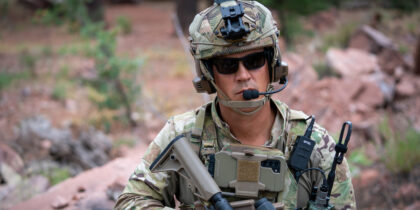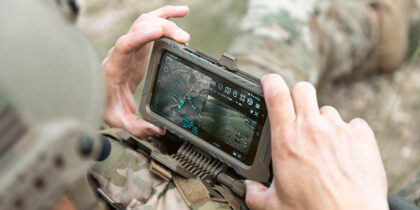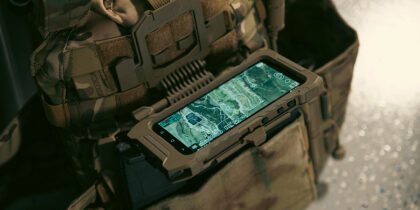Can augmented (AR) and virtual reality (VR) based training help better prepare our nation’s defense forces? Lauren Knausenberger, director, cyberspace innovation at the U.S. Air Force, thinks there’s potential.
Knausenberger shares her own experience with VR and thoughts on immersive training in FedScoop TV’s latest video in its “Accelerating Innovation in Government” series. Particularly, she points out that the ability to integrate sensor data and video into simulations can be incredibly valuable for airmen. Whether flying a mission, or going up against an F-35 fighter pilot, creating a realistic warzone experience can help service members of all ages increase readiness.
Digitize Your Government Agency
Get this guide to drive collaboration, boost productivity and ensure security in the public sector. Download Now
In addition to immersive technologies, Knausenberger is researching how to reap the broader benefits of mobility. She recognizes that security has been perceived as a barrier, but that’s shifting at the U.S. Air Force. Nobody wants to pull out a laptop or tunnel through a VPN to access mission data during an operation, which is why the U.S. Air Force is looking at ways to simplify security processes. Knausenberger also highlights that some airmen have been driving innovative mobile solutions, and even coming up with homegrown apps like bus and base activity schedules. However, Knausenberger emphasizes that the next step is to drive mobile adoption beyond local usage to the enterprise level.
Lastly, Knausenberger discusses how data and information is power, much like Peter Chin, division chief, case management systems office, U.S. Courts recently shared. She mentions that the marketing industry and intelligence community has figured it out, but while other parts of the military value data, they haven’t put the foundational building blocks in place to effectively use it. For example, there’s promise in using AI and machine learning for solving complex problems, such as how to reduce suicides in the military.
Watch the video to learn how the U.S. Air Force is reimagining computing to enhance the user experience, better meet mission outcomes and drive productivity. Plus, stay tuned to Samsung Insights’ federal government coverage for additional videos from the series in the coming weeks.







